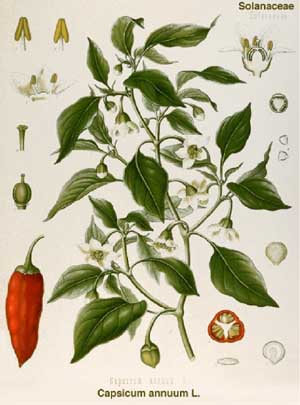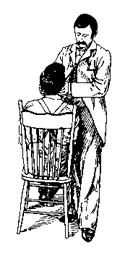 |
Meridian
Institute News
RESEARCHING THE SPIRIT-MIND-BODY
CONNECTION |
| In this issue:
|
|
The Cayce Herbal
|
| Herbs are a special gift from nature. Also called
"botanicals" and "herbals," they include all manner of plants and plant
parts, such as leaves, bark, berries, roots, gums, seeds, stems and flowers.
Herbal medicine has become so popular that television ads for popular herbs
such as St. John's wort, ginkgo, and ginseng have become commonplace on
the major networks. The attention being focused on herbs is well
deserved. For centuries plants, and plant derivatives, have been
the foundation of the healing art.
For persons interested in the Edgar Cayce approach
to healing, herbal medicine is an extremely important area in need of further
research. Edgar Cayce recommended over 100 different herbs for a
wide range of problems. To explore the role of botanical medicine
in the Cayce readings, Meridian Institute has undertaken a research project
to understand Cayce's approach and document our findings in a manual -
The Cayce Herbal.
|
 |
Currently, The Cayce Herbal is an electronic
text available on the Meridian Institute website. Because this is
an ongoing project, The Cayce Herbal will be regularly upgraded
with our latest findings. Version 1.0 of The Cayce Herbal
consists of the following sections:
-
Overview - An introduction and outline of The Cayce Herbal.
-
Home Remedies - A home medicine chest; simple remedies for common ailments.
-
Monographs - Fact sheets on over 100 herbs recommended by Edgar Cayce.
-
Classics - Classic texts that complement The Cayce Herbal.
-
Graphics - Drawings and pictures of the plants in The Cayce Herbal.
 |
Each monograph provides analysis on varies aspects
of Edgar Cayce's botanical medicine. For example, the monographs
contain tables that give the number of readings recommended for each
amount of an ingredient, the most common combinations of ingredients, and
the chronological pattern of utilization. Some herbs were prescribed
frequently in early readings only to be replaced by other herbs in later
years. By analyzing these patterns we hope to be able to understand
the complex herbal formulas and interactions with other modalities that
characterize Cayce's herbal medicine. |
Each monograph provides analysis on various aspects
of Edgar Cayce's botanical medicine. For example, the monographs
contain tables that give the number of readings recommended for each
amount of an ingredient, the most common combinations of ingredients, and
the chronological pattern of utilization. Some herbs were prescribed
frequently in early readings only to be replaced by other herbs in later
years. By analyzing these patterns we hope to be able to understand
the complex herbal formulas and interactions with other modalities that
characterize Cayce's herbal medicine.
The electronic format of The Cayce Herbal
makes it possible to quickly and inexpensively upgrade the information
by editing existing topics and adding new material. Future upgrades
of The Cayce Herbal may contain additional sections on clinical
applications, popular herbs not mentioned by Edgar Cayce, and current research
on the effects of specific herbs.
The Cayce Herbal will serve as a foundation
for subsequent clinical studies and continuing education opportunities.
From a networking standpoint, we hope that our work in this field will
serve as a bridge to health practitioners such as traditional herbalists
and naturopathic physicians who are interested in the Cayce material.
Explore The Cayce
Herbal at the Meridian Institute website: http://www.meridianinstitute.com.
Go to the Electronic Library section and follow the
links to The Cayce Herbal.
PHYSIOLOGICAL REGULATION THROUGH MANUAL THERAPY
Meridian Institute is pleased to announce the publication
of a book chapter titled "Physiological
Regulation Through Manual Therapy." The work is included
in a mainstream medical textbook - Physical Medicine and Rehabilitation:
State of the Art Reviews (Vol. 14, No. 1, February 2000. Philadelphia,
Hanley & Belfus, Inc.).
From the standpoint of the Edgar Cayce health information,
the significance of this chapter is that it documents several key manual
therapy concepts frequently mentioned in the Cayce readings. Reflexes,
coordination, drainage, centers, and general treatment are discussed from
perspective of traditional and modern manual therapy (primarily osteopathy).
Since physiological regulation is much less practiced by modern manual
therapists than during Cayce's era, this chapter provides a foundation
for practitioners interested in applying the techniques recommended by
Edgar Cayce.
 |
[Figure and caption from the book chapter.] Headache
- holding the vaso-motor from Osteopathy Complete by E. D. Barber, D.O.,
published in 1898. In addition to its use for relieving headaches,
this treatment was valued as a means of regulating physiology. "It
is impossible for the osteopath to reach directly the center in the medulla
oblongata. The same results are attained, however, by a pressure
through so-called "reflex action," by a pressure upon the upper cervicals
- where is situated the most important subsidiary center - at the same
instant tipping the head backward, thus bringing the neck into such a position
as to throw a pressure upon the nerves over the cervical vaso-motor center.
A steady pressure at this point for a few moments - reduces the general
blood pressure, slows the action of the heart, and will reduce the temperature
of the body in one-half the time required by any other known method."
(From Barber ED: Osteopathy Complete. Kansas City, MO, Hudson-Kimberly
Publishing, 1898.) |
Harold Reilly is cited as a good example of a chiropractor/massotherapist
who utilized the various techniques of physiological regulation in his
practice. Reilly received frequent referrals from Cayce. Reilly's
influence has carried over into the present era via the Cayce-Reilly School
of Massotherapy, a branch of the A.R.E. located in Virginia Beach.
This chapter is an example of Meridian Institute's
commitment to publish scholarly reviews in
the mainstream medical literature. Future issues of this newsletter
will keep you informed of peer-reviewed journal articles that have recently
been published.
|



